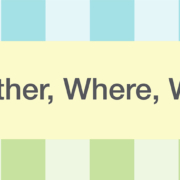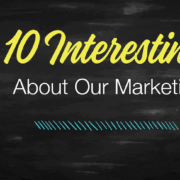What Is Closed-Loop Marketing & Why Should Senior Living Marketers Care?
If you’ve worked in marketing long enough, you’ve likely encountered the phrase “closed-loop marketing.” Marketing, of course, is famous for its jargon. But you should pay attention to this phrase—and embrace it.
At its simplest, closed-loop marketing helps you understand which marketing strategies, tactics, and campaigns convert leads into customers (i.e., move-ins). If you want to do more of what’s working, you must “close the loop” to help you understand exactly that.
Is your head spinning? Don’t worry—that’s why we’re here.
Below, we’re going to answer the following questions:
- What is closed-loop marketing?
- Are there any limitations to closed-loop marketing?
- How does closed-loop marketing work?
- What are the benefits of using closed-loop marketing in senior living?
- What if I need help with closed-loop marketing?
Let’s get to it!
What is closed-loop marketing?
Closed-looping marketing is a form of analysis that tells you which marketing tactics, channels, and campaigns turn leads into customers—or residents, in the case of senior living communities.
Picture an analog clock. A lead enters your site at the noon position. The lead engages with content and downloads a guide (the three o’clock position). The lead schedules a tour (six o’clock position). Finally, the lead has a follow-up conversation with sales and signs a lease for your community (the 11:59 position). The sales rep marks the lead as a customer, which closes the loop.
Of course, going from lead to resident takes much longer than 60 minutes. But the clock is merely a visual representation. Prospects will spend different amounts of time at various points as they journey around the loop. And some will never complete the loop.
Is closed-loop marketing automatic?
Closed-loop marketing only works if the sales team does its job. A salesperson closing a lead as a customer in your senior living CRM effectively “closes the loop.” Sales reps can also close the loop by indicating a lead is cold/lost—along with notes and insights on why this might be the case.
If set up correctly (more on this in a moment), you can review the closed customer’s journey from the moment they engaged with your community to all the various touchpoints leading up to their signing a lease. Same with the lost prospect.
From there, the marketing team can analyze the data. What channels deliver the best prospects? What content spurs action (like booking a tour)? Which emails get people to re-engage? Etc.
Are there any limitations to closed-loop marketing?
In marketing, you can only measure so much. The first trackable touchpoint a prospect has with your community probably isn’t their first real interaction.
For example, they might have read about your community on a review site, seen a sign in town, or heard about you through a friend or family member long before they ventured to your senior living website where a cookie could then track their journey.
And speaking of cookies . . . it’s possible someone could opt out of having a cookie track their activity. (In theory. Make sure your site’s cookie options are accurate and working.)
Bottom line: Closed-loop marketing isn’t perfect (but no analytics package is—at least, not yet!). Still, closed-loop marketing can provide valuable insights about what moves a person from an anonymous website visitor to a lead to a resident. And it can also tell you where leads stall out or drop off.
For example, if a particular piece of content seems to spur people to book tours, and most of those leads become move-ins, you might allocate more budget to promoting that content (for example, through paid ads).
On the flip side, if you notice a high percentage of lost prospects stall on a particular page on your site, you might do some A/B testing to see if you can remove the friction on that page.
How does closed-loop marketing work?
For closed-loop marketing to work, you need good marketing software (we love HubSpot), a CRM that integrates with the software, and willingness from sales reps to close their leads and provide notes about leads that became customers and leads that didn’t.
From there, you need someone on the marketing side who is savvy with metrics to analyze the data and review the notes from sales. The goal is to look for patterns to answer questions like: what campaigns or content seem to “work” with leads who become customers? Where are the lost prospects getting bogged down? Etc.
That’s an oversimplified explanation, but it gives you the gist. Having good marketing software is the biggest hurdle. We love HubSpot because it has closed-loop reporting baked in. (This HubSpot tutorial reviews the technical aspects of closed-loop marketing.)
How will closed-loop marketing benefit my senior living community? (And do I really need to do this?!)
If you don’t care about wasting dollars on marketing efforts that don’t work, then no—you don’t need to worry about closing the loop. But if you do care about maximizing your marketing budget, closed-loop marketing is necessary.
Remember, you analyze results to know what’s working and what needs to be improved. Then, you can allocate your marketing budget more effectively. Over time, based on actual data and results, you’ll know which marketing campaigns, tactics, and channels deliver the biggest bang for your marketing buck.
What if I need help with closed-loop marketing?
That’s why we’re here! Listen, we get it. There are only so many hours in the day, and your marketing and sales teams are already stretched thin. We can handle getting your closed-loop marketing set up and working correctly so that you and your team can focus on the results and do more of what works and less of what doesn’t. Intrigued? Let’s chat about how we can help turbo-charge your analytics.











